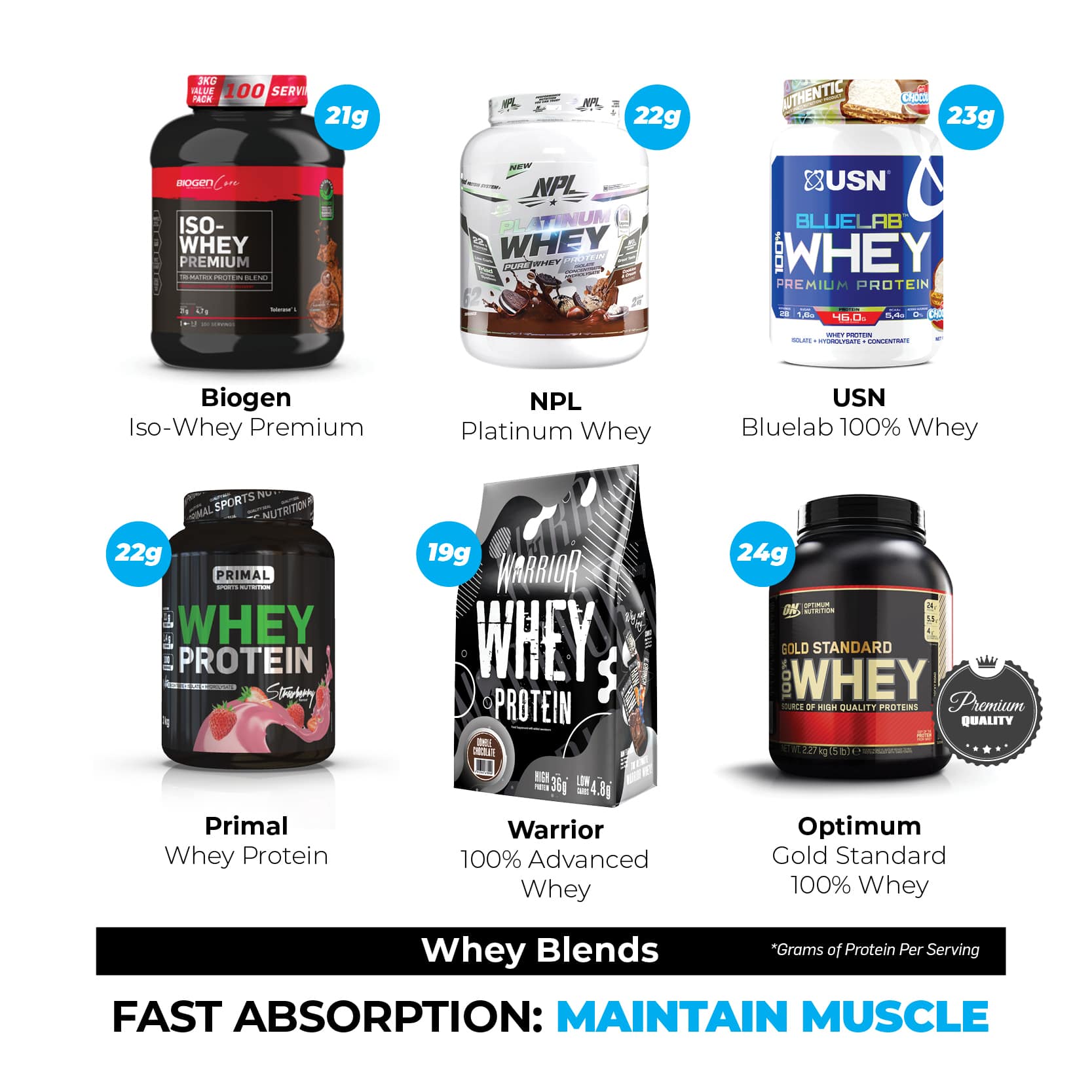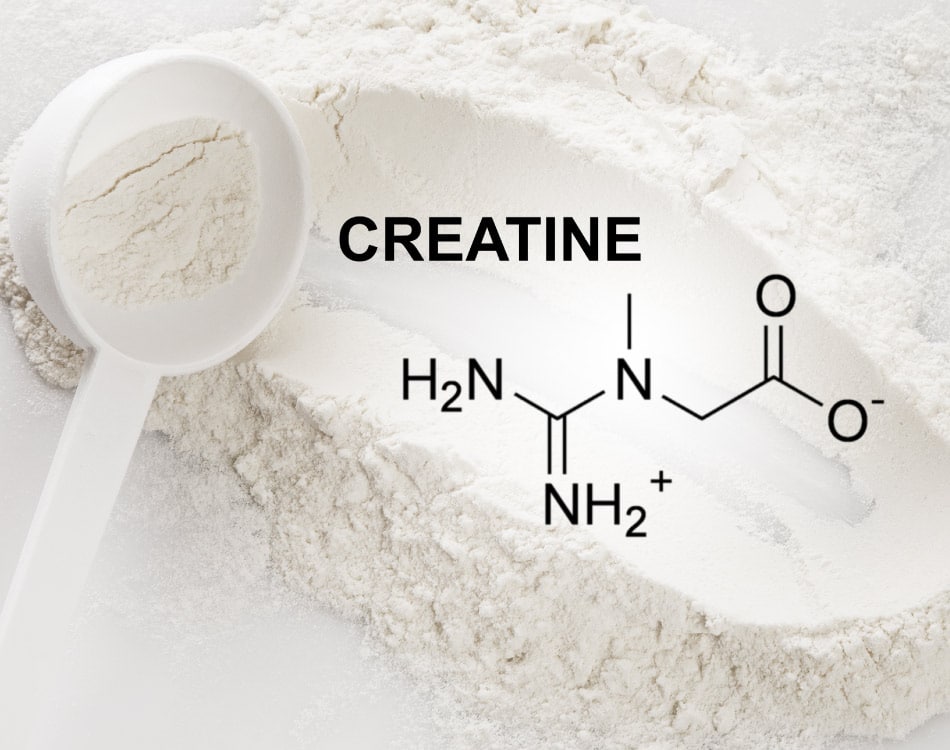Not all proteins are created equal. For instance, animal proteins have a complete amino acid profile, while many plant-based sources do not. So optimise your results by choosing a protein that suits your goals
A fast release protein like whey is ideal for use when you need an immediate amino acid boost to kickstart the muscle-building and repair process, like directly after training or first thing in the morning after the night-time fast.
A standalone slow release supplement like casein works well to support muscle repair and growth while you sleep by providing a prolonged supply of amino acids.
And a blend like soy, whey and casein is ideal for use throughout the day, be it first thing in the morning, after training or as a meal replacement, especially when you have long periods between meals. The combination of fast, medium and slow release proteins will provide an immediate supply of amino acids and can maintain your anabolic (muscle-building) state for several hours between meals.
Bioavailability matters
Another important difference is bioavailability – the rate at which the digestive system breaks down the proteins (first in the stomach into chains of connected amino acids called polypeptides) and the body absorbs the digested single amino acids.
The area of the small intestine – duodenum, jejunum, or ileum – affects this absorption rate as each area absorbs different protein types.
For example, the first part of the small intestine absorbs whey (hydrolysate, isolate and concentrate) and soy hydrolysate, while the jejunum (second part) absorbs egg protein.
READ MORE | Discover the world of protein options
The differences in dairy absorption rates
The time it takes for the body to absorb the single amino acids digested from whole proteins varies significantly between sources. Even different dairy-based proteins have different absorption rates.
Amino acid concentrations rise rapidly after drinking whey protein, peaking within 100 minutes and returning to baseline within 300 minutes. Conversely, the body absorbs casein – another dairy protein – more slowly, with amino acid concentrations remaining elevated beyond five hours.
A 2001 study* proved these differences. Participants who drank whey protein experienced a higher and faster increase in circulating amino acids than those who consumed casein. These elevated levels were also “more transient”, which means they returned to resting levels quicker after the meal.
Based on the research findings, amino acid levels started rising after 20 minutes and remained elevated for 180–200 minutes among those who consumed the amino acids and whey protein. It took 20–40 minutes for amino acid levels to rise after participants consumed casein and remained elevated for seven hours (all participants consumed a 30g serving of protein).
READ MORE | 4 ways to pack in more protein
Average absorption rates of different protein supplements:
FAST:
- Whey Protein: up to 3 hours
- Whey Isolate: 60-90 min
- Whey Concentrate: 2-3 hours
MODERATE: Soy (and various other plant proteins): 3-4 hours
SLOW: Casein: 3-7 hours
READ MORE | Fire up your metabolism with protein




Why blending is trending
And a 2012 clinical study** confirmed that consuming a blend of proteins (soy, whey and casein) versus whey protein alone “provides a prolonged delivery of amino acids to the muscles, making it optimal for consumption following resistance exercise.”
Protein blends deliver this absorption profile because whey provides a quick release of amino acids, while soy delivers an ‘intermediate’ release and casein is a slow-release protein source, requiring several hours to digest.
READ MORE | Why protein supplement timing matters to body composition
Meal composition matters
Consuming your protein with other macronutrients can interfere with the rate of protein absorption, especially fat. The combined food ball (bolus) that passes through your digestive system slows digestion, which slows down every subsequent step in the process, including protein absorption.
The take-away? Avoid combining fats with protein sources at important mealtimes during the day when rapid amino acid absorption is most beneficial, like first thing in the morning and after exercise.
READ MORE | Nail your daily protein intake to build more muscle
Use enzymes to boost absorption
Researchers*** who studied ways to improve protein absorption found that digestive enzymes can offer benefits.
The study found that it took 4 hours for amino acids levels to peak after consuming whey. However, those who drank whey alone experienced a 30% increase in circulating amino acid levels compared to baseline in that time, while those who took 2.5g of enzymes with their whey saw amino acid levels rise 110% higher. Those who had double the enzyme dose (5g) faired even better, achieving 127% higher absorption.
READ MORE | Gut check: Don’t let digestive distress put you off protein supplements
References
*The digestion rate of protein is an independent regulating factor of postprandial protein retention. Am J Physiol Endocrinol Metab 280: E340–E348, 2001
**Effect of Protein Blend vs. Whey Protein Ingestion on Muscle Protein Synthesis Following Resistance Exercise. Journal Nutrition. 2013 Apr; 143(4): 410–416.
***An open label study to determine the effects of an oral proteolytic enzyme on whey protein concentrate metabolism in healthy males. JISSN, 2008



















